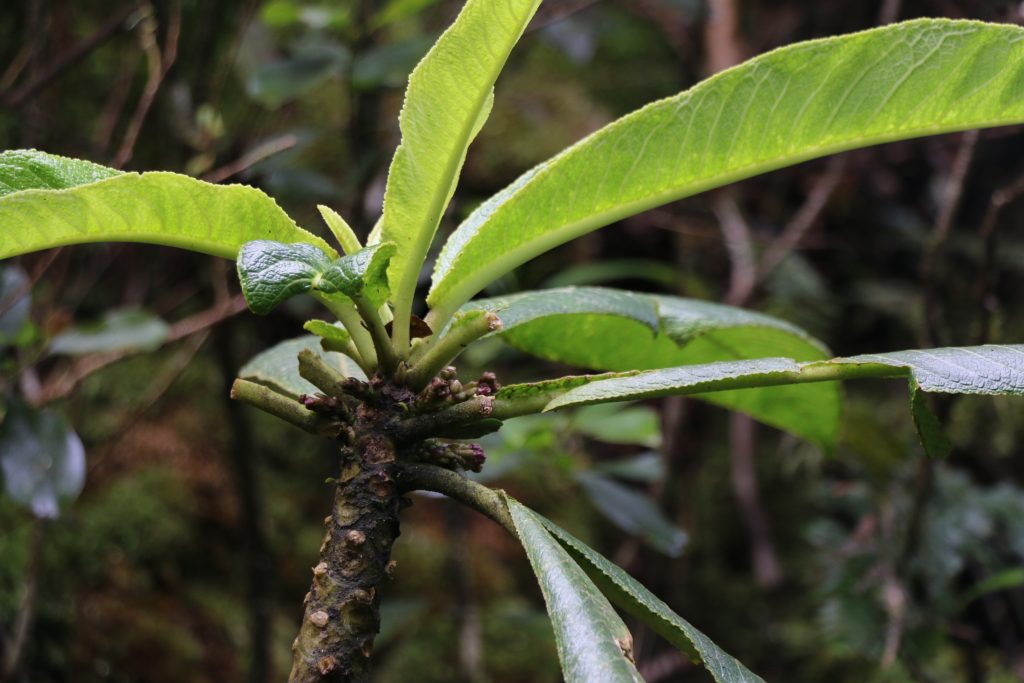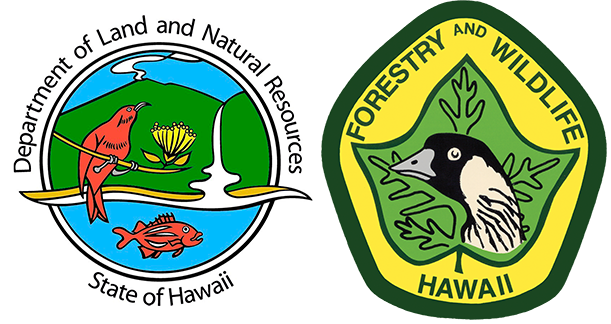Plant Cam Keeps A Watchful Eye On Extremely Rare Plant; Access Available to Everyone, Anywhere
Posted on Jun 7, 2018DEPARTMENT OF LAND AND NATURAL RESOURCES
News Release
| DAVID Y. IGE GOVERNOR |
SUZANNE D. CASE
CHAIRPERSON |
For Immediate News Release June 7, 2018
 (click on image to watch video)
(click on image to watch video)
PLANT CAM KEEPS A WATCHFUL EYE ON EXTREMELY RARE PLANT
Access Available to Everyone, Anywhere
(Honolulu) – Deep in the Honouliuli Forest Reserve, high in O‘ahu’s Wai‘anae Mountains, a sophisticated monitoring station is watching Caly 24-hours a day, seven-days a week. Caly (cyanea calycina) or haha in Hawaiian, is one of less than 200 members of this species left on O‘ahu.
You might imagine that watching a plant grow is like watching paint dry. Not so. Caly’s remote camera and monitoring station produces a daily time-lapse video of the previous 24 hours. Susan Ching, the O‘ahu Botanist for the DLNR Division of Forestry and Wildlife (DOFAW) explained, “People don’t think that a plant moves on a daily basis. But with changes in light and rainfall, with time-lapse, you can see leaves perk up or hang down depending on how much rain we’ve had. It’s actually exciting to see how much the plant does move and interact with its environment.” The system produces real-time views of Caly, the time-lapses of the plant and of the broader landscape. You can watch storm systems come and go as they pass up and over the Wai‘anae range.
The Life of Caly: The life of an endangered plant on top of a mountain in Hawai‘i, is the website available to anyone https://www.plantcam.live/, where viewers can check on Caly’s growth and soon watch her bloom. The plant cam is a partnership between the U.S. Geological Survey (USGS), the University of Hawai‘i, the U.S. Fish and Wildlife Service and DLNR/DOFAW. Ching said, “Rare plants are difficult to see, especially on O‘ahu. People don’t easily get a glimpse into their lives, where they live and how they interact with other plants. The Hawaiian people were very connected to the forest and they treated these plants, like haha, with reverence and respect. This modern technology provides a glimpse into the past; since this group of plants arrived on the islands 13 million years ago and documents one plant’s life well into the future.”
The project is led by Lucas Fortini, a Research Ecologist at the USGS Pacific Island Ecosystems Research Center. He said the team has two primary research goals. “One is trying to really understand the biology of a lot of these endangered plants that grow nowhere else in the world. It takes a lot of effort to keep them around. Second, is monitoring to really understand how these plants react to changes in the environment, weather and so forth.” The monitoring station provides a window into the life of Caly and other native plants and will help researchers determine the best locations for possible relocations.
Last fall Fortini and UH-Manoa graduate student Ryan Mudd spent days stringing power and  transmission cable from the plant cam and monitoring station almost vertically uphill, through thick underbrush and forest, to the top of a ridge. From there images and data are transmitted to Honolulu for distribution. Mudd explained, “In addition to the time-lapse loops, people who view the website will be able to see graphs and charts that depict atmospheric conditions around Caly, like temperatures, moisture, and light conditions.”
transmission cable from the plant cam and monitoring station almost vertically uphill, through thick underbrush and forest, to the top of a ridge. From there images and data are transmitted to Honolulu for distribution. Mudd explained, “In addition to the time-lapse loops, people who view the website will be able to see graphs and charts that depict atmospheric conditions around Caly, like temperatures, moisture, and light conditions.”
During the history-making rains on O‘ahu in February a nearby tree toppled onto Caly. Had the plant camera not been active, it could have been weeks before researchers made the hike deep into the forest reserve to check on it. It was damaged, but since its watchers got there quickly they were able to clear branches and limbs that otherwise might have killed it.
Ching added, “Due to our high population on O‘ahu we get distracted from our natural habitat. A lot of attention is given to lowland issues like erosion and beach activities. Our forests and our rare and endangered plants are also highly impacted by human activity. The hope is when people engage in The Life of Caly on the plant cam website they’ll find benefit in making a new connection to our environment.”
# # #
Media Contact:
Dan Dennison
Senior Communications Manager
Hawaii Dept. of Land and Natural Resources
1151 Punchbowl Street, Room 131
Honolulu, HI 96813
[email protected]
[email protected]
(808) 587-0396 (Communications Office)
(808) 587-0407 (Direct Line)
(808) 295-8749 (Cell)
